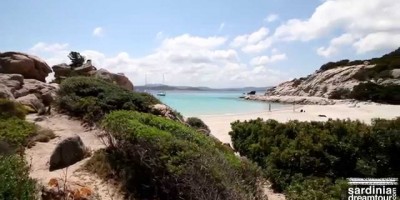Sardinia – paradise on earth
 April 18, 2016
April 18, 2016

Sardinia – paradise on earth
Sardinia is the second largest island in the Mediterranean Sea (after Sicily and before Cyprus) and an autonomous region of Italy, which goes by the official name of Regione Autonoma della Sardegna / Regione Autònoma de Sardigna (Autonomous Region of Sardinia).
The nearest land masses are (clockwise from north) the island of Corsica, the Italian Peninsula, Sicily, Tunisia, the Balearic Islands, and Provence. The Tyrrhenian Sea portion of the Mediterranean Sea is directly to the east of Sardinia between the Sardinian east coast and the west coast of the Italian mainland peninsula. The Strait of Bonifacio is directly north of Sardinia and separates Sardinia from the French island of Corsica.
The island has a Mediterranean climate (Köppen: Csa) along the coasts, plains and low hills and a continental climate on the interior plateaus, valleys and mountain ranges. During the year there are approximately 135 days of sunshine, with a major concentration of rainfall in the winter and autumn, some heavy showers in the spring and snowfalls in the highlands. The average temperature is between 11 to 17 °C (52 to 63 °F), with mild winters and hot summers on the coasts ( 9 to 11 °C (48 to 52 °F) in January, 23 to 26 °C (73 to 79 °F) in July), and cold winters and cool summers on the mountains ( −2 to 4 °C (28 to 39 °F) in January, 16 to 20 °C (61 to 68 °F) in July).
This website uses cookies to improve your experience. We'll assume you're ok with this, but you can opt-out if you wish.Accept Read More Privacy & Cookies Policy
Tracking ID
UA-74037108-1

 Everybody Loves Tuscany
Italy is a dream that keeps returning for the rest of your life – Anna Akhmatova
Everybody Loves Tuscany
Italy is a dream that keeps returning for the rest of your life – Anna Akhmatova

Comments are closed.